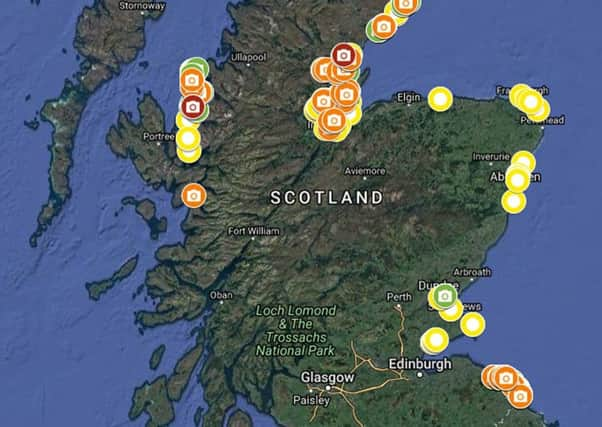Map reveals hidden litter hot spots on Scotland's beaches


A new online map has revealed hidden blackspots of plastic pollution blighting some of Scotland’s most remote coastlines.
The map, which includes detailed aerial photographs, pinpoints places where litter is at “industrial levels” and identifies previously uncharted rubbish sinks.
Advertisement
Hide AdAdvertisement
Hide AdAreas where large items of litter were spotted have been classified by the quantity present, with images showing the extent of the problem.
Conservationists say the tool will help target efforts to clean up mounting piles of man-made debris that are littering Scottish shores, posing a risk to important wildlife and the environment.
The Scottish Coastal Rubbish Aerial Photography project, known as SCRAPbook, is a collaboration between the charities Marine Conservation Society (MCS), Sky Watch Civil Air Patrol and the Moray Firth Partnership.
It involves pilots and observers taking to the skies to photograph sections of the coastline where they spot litter or pollution.
“In the worst areas it is absolutely at industrial levels, with plastic blasted up the hills from the coast where it has been blown,” said Sky Watch chairman Archie Liggat.
“There are hundreds and hundreds of large plastic barrels and crates all over the place, and when there is any large plastic litter visible at all there’s usually a significant amount of smaller stuff
too.”
Catherine Gemmell, MCS Scotland conservation officer, coordinates beach cleans involving thousands of volunteers around Scotland as part of the charity’s Beachwatch programme.
But she says massive swathes of the coastline have never been tackled.
Advertisement
Hide AdAdvertisement
Hide Ad“With nearly 10,000 kilometres making up Scotland’s mainland coast, we know there are many stretches of beach that have had no recorded clean-up,” she said.
“SCRAPbook will help address that and provide us with new information that will be crucial to highlight to government and industry what steps we need to be taken next in the fight against marine litter.”
Waste plastic, including items such as carrier bags, bottles, crates and fishing gear, remains in the environment for hundreds of years, where it poses a major risk to wildlife – and potentially humans.
Estimates suggest more than a million seabirds and 100,000 marine mammals die every year as a result of ingestion of or entanglement in plastics.
Over time large items break down into smaller pieces, known as microplastics.
These tiny fragments, which can carry chemical pollutants, are often eaten by creatures who mistake them for food. Studies of dead seabirds and of shellfish destined for human consumption have found the majority contain plastic.
The new map is publicly available, and it’s hoped communities will use it to identify the places where clearance operations are most
needed.
Vicky Junik, from the Moray Firth Partnership, said: “We hope that SCRAPbook will become an invaluable tool to everyone tackling the rising tide of marine litter.
Advertisement
Hide AdAdvertisement
Hide Ad“The easier it is to find out where the litter is, the easier it is to mobilise clean-up efforts.
“We’ve tried to focus on the less popular or harder to reach parts of the coastline, so we can build a really comprehensive picture of the reality and scale of the challenge – a challenge everyone can help tackle.”
Mairi Gougeon, Scotland’s minister for rural affairs and the natural environment, added: “Litter washed up on our coastline is a scourge that harms our natural environment, both in the sea and on land.
“That is why I welcome this exciting project that enables the extent of litter around our coastline to be proactively mapped.
“By collating this information we can better understand where further attention needs to be focused in our continuing efforts to clean up our beautiful coastline.”
The map can be accessed here.